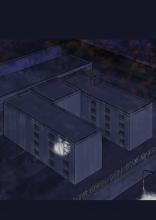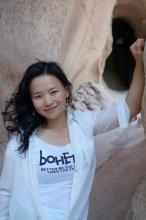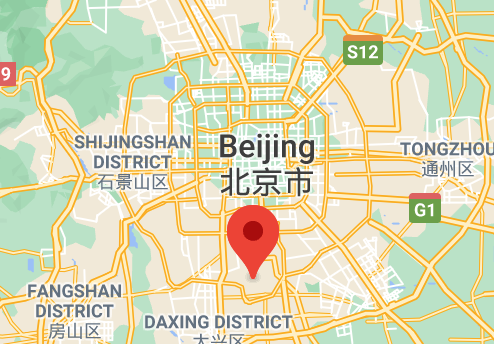What happens in China’s secret RSDL prisons?
 When the last two journalists working for Australian media – Bill Birtles and Mike Smith --fled the country last week on the advice of their foreign ministry – they almost certainly narrowly avoided the same fate as fellow Australian Cheng Lei.
When the last two journalists working for Australian media – Bill Birtles and Mike Smith --fled the country last week on the advice of their foreign ministry – they almost certainly narrowly avoided the same fate as fellow Australian Cheng Lei.
Cheng, who worked for China’s Party-State media CGTN, was disappeared into a secret prison system known as RSDL a month ago and is now accused of national security crimes, likely in retaliation for souring relations between Beijing and Canberra.
In RSDL or residential surveillance at a designated location, victims vanish, hidden at a facility cut off from everyone including legal help, to be subjected to incessant interrogation and likely maltreatment and torture for up to six months.
RSDL has become China’s favoured tool to implement its hostage diplomacy through the targeting of foreigners. It has also been used on fellow Australian, writer Yang Henjun, Canadians Michael Spavor and Michael Kovrig, American businessman Kai Li and Safeguard Defender’s own founder and director Peter Dahlin.
Below, Dahlin describes what Cheng is likely facing in her RSDL prison and how the latest data shows that the system is expanding at a terrifying rate.
***
 Cheng has not been arrested, has no right to a lawyer, is not being kept in a detention centre or police station, and no court has approved her being taken.
Cheng has not been arrested, has no right to a lawyer, is not being kept in a detention centre or police station, and no court has approved her being taken.
She will spend up to the next half year kept in a secret location that neither her family nor her government will be aware of, living in a suicide-proofed cell, held in solitary confinement and incommunicado. She will be, what the UN concluded a few years ago, was a state of ‘enforced disappearance’, another term for state-sanctioned or organized kidnapping.
Any consular access, which will be rare and always monitored and attended by the police, will either be via video-chat or at locations other than her RSDL, to ensure the Australian government is kept in the dark about her real place of incarceration.
Due to her being Australian, and taken in Beijing, we do actually know the likely place of her RSDL: at a custom-built facility near Beijing’s now closed southern Nanyuan airport at these coordinates (39.809781″N, 116.383599″E)

Cheng would be locked into one of the secure wings, there's one on each of its four floors, and kept in a cell where even the toilet seat and faucet are padded. Like many victims have said, at some point, she will likely consider whether it’s even possible to kill herself, and the answer is no. In her cell two guards will sit, working in six hours shifts, and stare at her from across the room. She will not be allowed to communicate with them. She is unlikely to be allowed to move around the room, but will be forced to sit on the very basic bed in the corner.
In the same secure wing, just opposite the cell, is the interrogation room, where she will likely spend a six-hour session every day, or rather, night - to ensure she gets weakened by not getting proper sleep. While there she will be strapped into a wooden tiger chair, with a board locked across her legs, and possibly handcuffed and ankles shackled too.
Loud screaming and intimidation to ensure she doesn’t sleep are almost guaranteed. Whether she will experience physical torture is unknown – many foreign victims do not, but a great many Chinese do.
We know all this because I, as well as many people I know and have worked with, have seen the inside of that facility and gone through it all. The entire place is designed to break you, to confess to whatever accusation they launch, and ultimately, to make you believe your own confession. You are to be reformed by being broken down.
Victims that have spoken out about their experiences inside, published as a book by Safeguard Defenders, in The People’s Republic of the Disappeared, describe a long and varied list of torture methods to extract confessions. Almost everyone confesses in the end.
The most frightening development, though, is that the use of RSDL is exploding in China. Just before we learned that Cheung had been swallowed into the system, Safeguard Defenders released a landmark study that showed nearly 30,000 victims since Xi Jinping came to power in 2013 had been taken into RSDL.
It revealed that the system, for a long time thought to only be primarily used against high profile political targets, and a growing number of foreigners, myself included, has spread out thoughout the country and is now being employed on a mass-scale by local police.
It’s not hard to see why. With one small revision to its criminal code, Chinese police, as well as its feared Ministry of State Security, the organ that placed me into RSDL, can ignore even the most basic rights of those taken, and keep you in absolute seclusion for half a year. Despite this limit, the new report also shows that many are kept longer than this half-year limit.
This year at least 20 people will disappear, every day, into this new favoured tool for silencing dissent. The number of foreign citizens, including Australians, in the system is almost guaranteed to grow.
So far, failure to speak up against this system, including by the Australian government, has allowed it to expand without resistance, without pressure, without attention. With no pushback against foreign citizens being disappeared instead of arrested, it’s no wonder China’s has expanded its use, considering the immense power the system holds. In fact, such disappearances are considered so severe a human rights violation that if it’s done in widespread or systematic form, it may amount to a crime against humanity.
Our new report, using the government’s own data, shows that it is both.